
Science fiction has always been a popular genre, but, like most other genres, it has peaks and valleys. These days, science fiction has exploded in popularity, making it a great genre to write.
We’re now living in a world humans never believed actually could (would exist).
We have 3-D printers, drones, and Alexa devices that we can ask to find us a marinara recipe while we’re elbow-deep washing dishes. In an age of texting, wifi, virtual reality, and self-driving cars, humans are now faced with all those sticky moral questions posited by the original science fiction authors over a century ago.
This is why story is so critical. Today, I have a special guest, Maria Grace, author of twenty-three books and contributor to Putting the Science in Fiction. She’s here to give us some simple tips to launch our science fiction into SPACE!
Take it away, MG!
***
A Brief, but Nerdy History
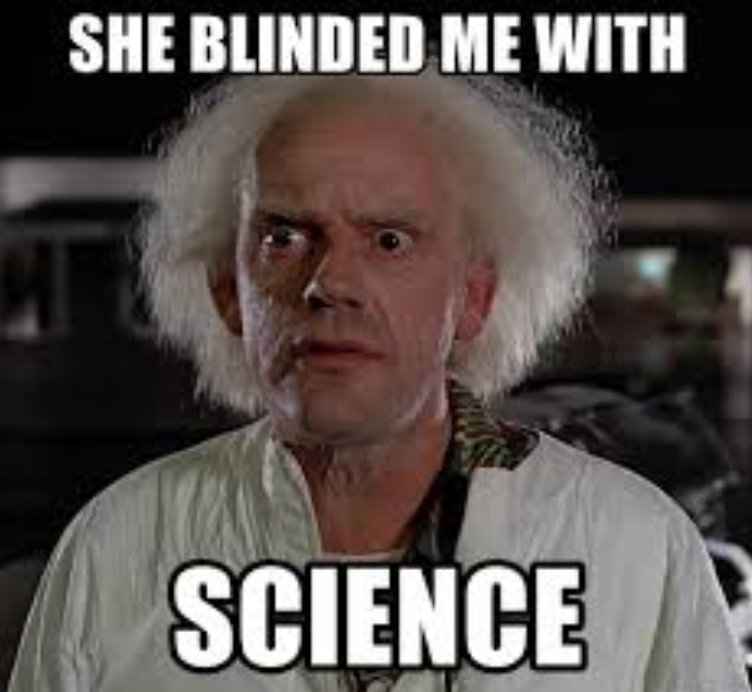
I grew up on science fiction. From some of the worst stuff imaginable (I’m looking at you Lost in Space), to what would become some of the most influential franchises in history.
Star Wars and Star Trek? I was there from the get-go.
I probably shouldn’t confess this, but I cut my nerdy ten-year-old chops on a manual Smith Corona typewriter…writing Star Trek fan fiction.
Wait … wait … don’t click away, I promise I’m normal now. No wait, what did I just say? Never mind. I’m a writer and we’re not normal, ever.
And we lie.
But I digress.
All these years later, I still drool over some of those gadgets. Who couldn’t use a Universal Translator when talking to their teen-aged children? It would work for that wouldn’t it?
And the replicator? Oh, I want a replicator.
After dinner, wouldn’t it be a dream to just toss everything into the bin and not worry about all that cleaning and scrubbing? Be still my heart. And a transporter …
*wipes drool off keyboard*
You know what’s even better?
I Now Get to INVENT Those Gadgets
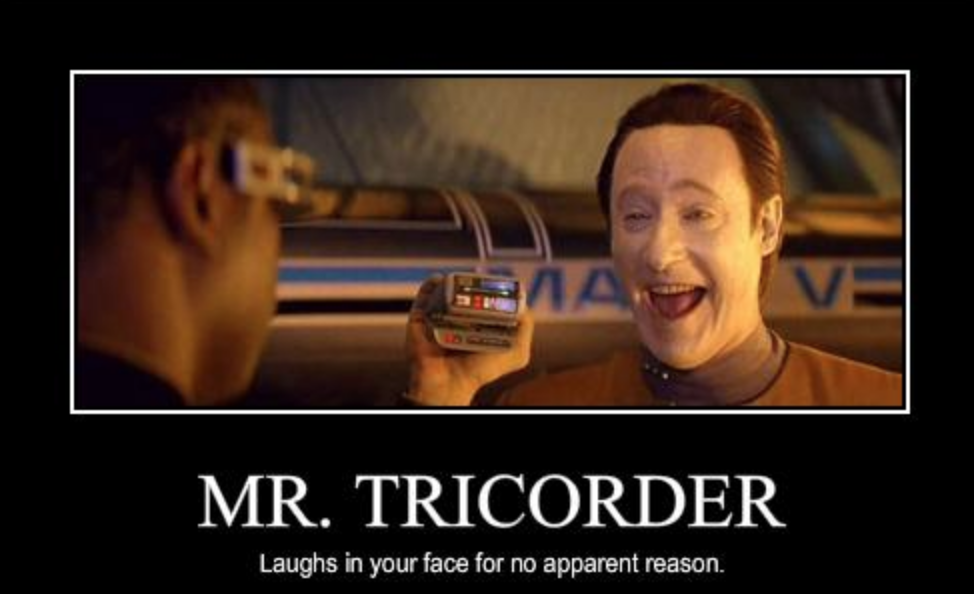
*rubs hands together and cues maniacal laugh*
Oh, the things I can create. I want a 3-D printer to craft my bluejeans so they fit just right every single day. How about a flying car? The Jetson’s promised me a flying car, and I want one now yesterday.
Point is, there are so many possibilities that it’s easy to get carried away. And there, my friends, is a major pitfall that can trip us up when writing science fiction.
Too. Many. Gadgets.
Tell me it isn’t true. No such thing as too many whizzbang-humdingers, right?
About that…
Sorry to break it to you, but it’s dead Jim, dead…wait no wrong line—right idea, but you get the gist.
Tell Me It Isn’t True
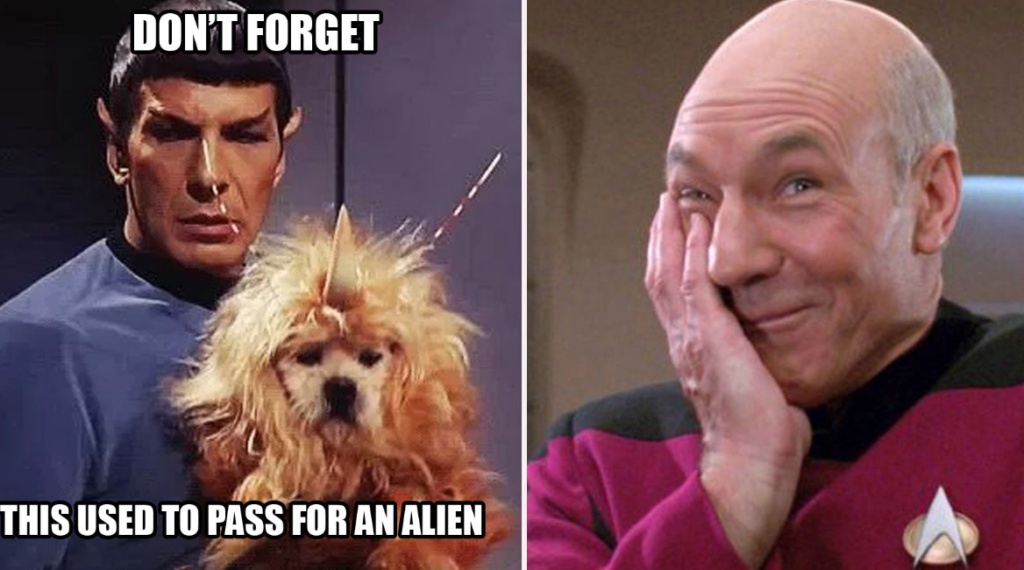
When we venture into the brave new world of writing science fiction, its easy to get caught up like Augustus Gloop in Willy Wonka’s factory, crafting one shiny doohickey and an even shinier thingamabob.
Pretty soon we end up running right off the cliff and into the chocolate river to be sucked out by the extraction pipe to the dreaded boiler room—and on one wants that—right?
Just because we CAN, doesn’t mean we SHOULD. So, take a deep breath fellow writers and step away from the sonic screwdrivers.
Science Fiction Secret Sauce

Hold off tossing the digital tomatoes. I can already hear the protests.
Blasphemy! Science fiction needs tech and you’ll only get my light saber when you pry it out of my cold dead hands.
Of course science fiction needs science—it wouldn’t be science fiction without all those science-y fiction-y toys. But—and of course there had to be a ‘but’—there’s something more.
A secret sauce.
Come close my pretties and learn the extra special sauce recipe that will bring your science fiction to a whole new level.
*drumroll*
Are you ready? Wait for it….
Tell an amazing story.
Good Science Fiction Contains FICTION

Um…it’s in the name for a quick and simple reference.
It’s so easy to get caught up chasing shiny bits and bobs that we forget science fiction includes fiction (which is a STORY). All the structure and techniques that apply to writing great fiction also apply to writing great science fiction.
A solid story problem is the core of every great science fiction work. When we strip away all the blinking lights and things that go ‘boop,’ what we’ll find are basic human problems that drive the story.
Dilithium crystals are totally your call.
Look at Tony Stark (Iron Man) from the Avengers. Sure his suit is super-cool, but it’s actually Stark’s flawed and complex character that piques our interest. Mix Tony’s more-than-carry-on emotional baggage with an intriguing story problem plus some end-of-the-world stakes? And that’s a formula that keep us going back.
Movie after movie after movie…after movie.
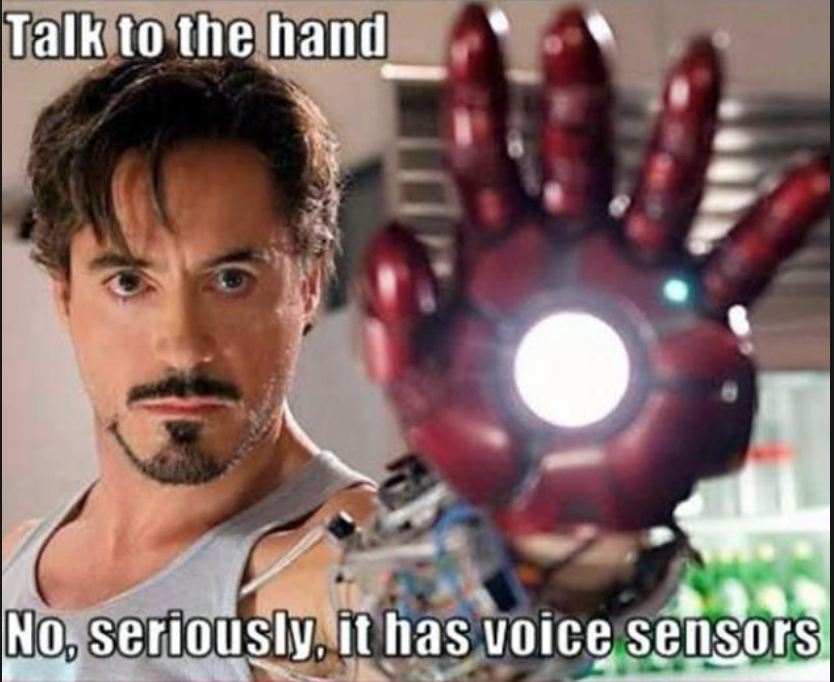
Just how many Star Trek incarnations are there now? Doesn’t matter. My point is simply that, sure, it wouldn’t be Star Trek without starships, transporters, replicators, emergency medical holographs, and, and, and…
But take a moment to reflect over each incarnation. Focus on the main characters driving the story ship line: Kirk, Picard, Sisko, Worf, Spock, etc.
Remember the problems they faced: being overrun with vermin (Tribbles), wrestling with what it means to be ‘human’ (Data), the struggles that go with being a ‘half-breed,’ the progeny of two diametrically opposite races (Spock).
In science fiction, all problems are human problems.

Science fiction is two words—science + fiction. Subtract the gripping story and memorable, dimensional characters (fiction), and that leaves only science. Science without a story is called a textbook, not a novel.
Granted, science can be fun. In fact, those of us who are drawn to the science fiction genre likely were the nerds eager students who couldn’t wait for lab day.
Please understand, I love my microwave, my tablet, and the T.V. remote my husband bought me that I can’t figure out how to work (but keep trying anyway). Alas, those are all ‘things’ I can put down, walk away from, even lose—and all are simple to replace.
And that’s the crux of the matter. Superlative fiction has no simple replacement. Science fiction crafted properly shouldn’t have a good place for a bookmark.
When we draw readers into our story, they should feel as if they’ve been snagged by a tractor beam, and no amount of thrust can free them (and frankly, they’re happy to be taken captive).
Two Tips for Riveting Science Fiction

If we want to make our science fiction totally binge-worthy, as in stay-up-all-night-even-though-there-is-a-big-presentation-tomorrow binge worthy, there are two big things we can do.
First, we need to craft a story that can stand up on its own, without all the glittery gizmos.
Take Killjoys—Hubby’s and my current guilty pleasure. Here’s my log-line for the show:
A bounty hunter with a mysterious past and her team discover the Company’s deadly intentions and now her dark secrets hold the key to saving the world from the Company.
Read that again. What do you notice? Take your time. I’ll just be here, waiting patiently.
*cues Jeopardy theme*
So, what do you notice about that log-line? I’ll give you a clue: it sounds like a fantastic story, but it also could be set just about any place, during any time.
Sure, Killjoys is set in a system of four planets, complete with space travel and all manner of cool doohickeys, but the log-line doesn’t depend on all that ‘stuff.’
The same story could be set in the Wild West, the Australian Outback, or today in any major city and it would still work.
*mind blown*
Now, before anyone protests, I agree changing the setting also changes most of the story details. If we set it in the Wild West we’d have horses instead of spaceships and the Company’s secret would be salient to the time period. But, let’s just refit the log-line and you’ll see…
*sounds of sonic screwdriver*
A bounty hunter with a mysterious past and her team discover the Company’s deadly intentions and now her dark secrets hold the key to saving the unsettled western territories from the Company.
Granted, the Wild West version is no longer science fiction, but the core players and the goal are roughly the same.
In terms of the underlying story though, those aren’t the important details—the core of the story stands.
That’s why we can retell fairy tales in the modern day, or rewrite classic stories (I’m looking at you Jane Austen buffs) into the modern day and they work.
The core story doesn’t depend on the setting.

Sure, there are facets of the stories that might make them work easier in one time period or setting than another, but they can still work.
That’s the point: Good stories just work.
But then what’s the point of writing science fiction when you can just plunk a story down anywhere, wind it up and let it go?
Here’s where the magic—oh wait, here’s where fantasy…I mean science happens.
Oooo Science!
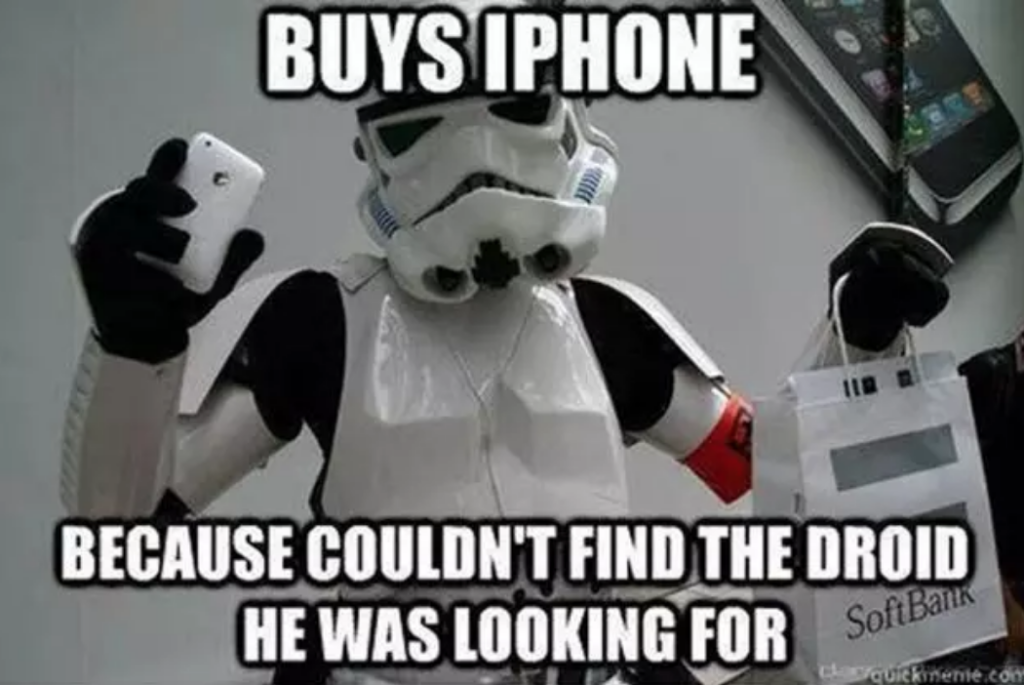
Once the bones of our story are all fit together and standing on their own, now we flesh it out with all those awesome gizmos we love. Notice I didn’t say ‘dress it up’—that implies something that isn’t really important to the story—and that’s far from true.
Tech is vitally important and a large part of the science fiction ‘magic.’
But, the deus ex machina—the sonic screwdriver than can perform any task to save the day can make it too easy on our characters.
Add in those mindless MacGuffins that only serve as convenient plot devices, those are just too easy on us as writers (we can be more creative than that).
Great science fiction tends to treat techy-shiny things in one of two ways…
Foreground vs. Background

Foreground
On the one hand, we have Dune where the spice Melange (used by the navigators for intergalactic space travel) is foundational to the story problem.
Everything in the story revolves around who will control the spice. Getting rid of the spice would fundamentally change everything about the story world. That is what makes Melange solidly part of the foreground.
I, Robot is another good example where the technology is in the backbone of the fiction. Pull it out (um, ouch), and we’ve got a lot of dry bones lying on the floor in desperate need of being wired together with something else.
This is the go-big-or-go-home version of tech.
Background
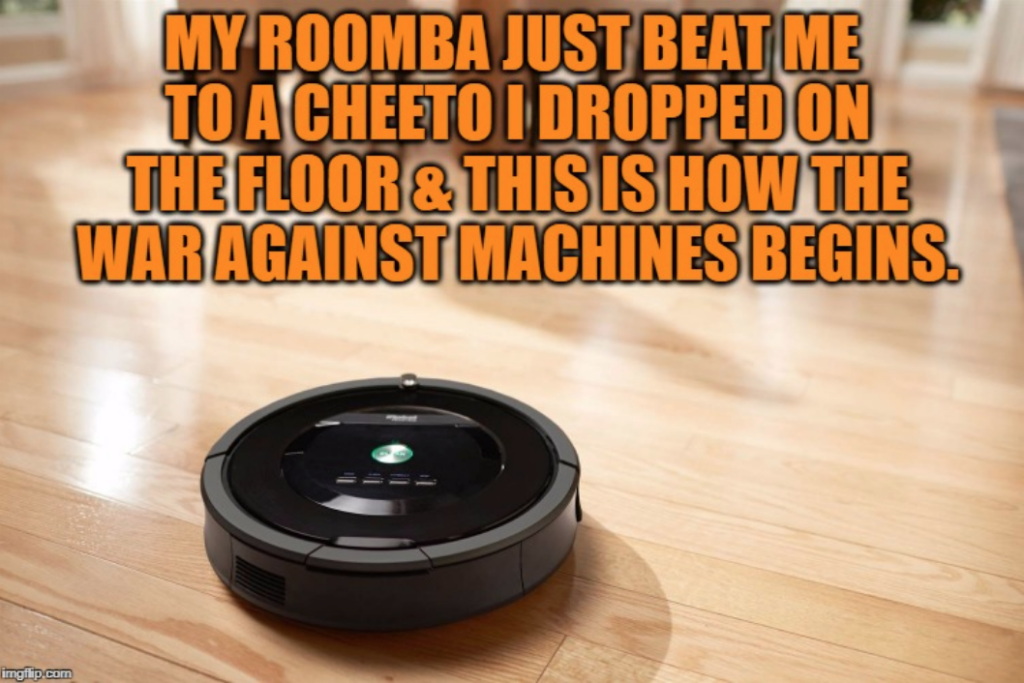
Another method is what we’ll call the Star Trek approach to technology. In most of the Star Trek episodes and franchises, the replicators and transporters are simply part of the everyday world like our cellphones and automatic doors today.
***Remember those were largely science fiction not so very long ago.
In this case, the gizmos define how day to day lives work, but don’t attract any more attention than our cellphones would today—unless they suddenly quit working in a way that’s essential to the plot. Essentially, the gizmos reside in the background and remain there.
Hold on. Don’t shout me down, yet.
Star Trek had characters—Data and the emergency medical hologram—who WERE technology. What can be more whizz-bang than that?
That’s absolutely true. But, when we take a closer look at these mechanical marvels, we can see those technologies that created the characters always resided solidly in either the foreground or the background.
In certain episodes, the core plot problem revolved around the technology—usually asking the question of what it meant to be a sentient being who is ‘alive.’
More often though, their nature was just part of their core traits and these characters played the same kind of role that the other characters did. The marvelous technology that created them then returned to its place as part of the background.
So what’s a writer to do?
Avoiding the Mushy Middle
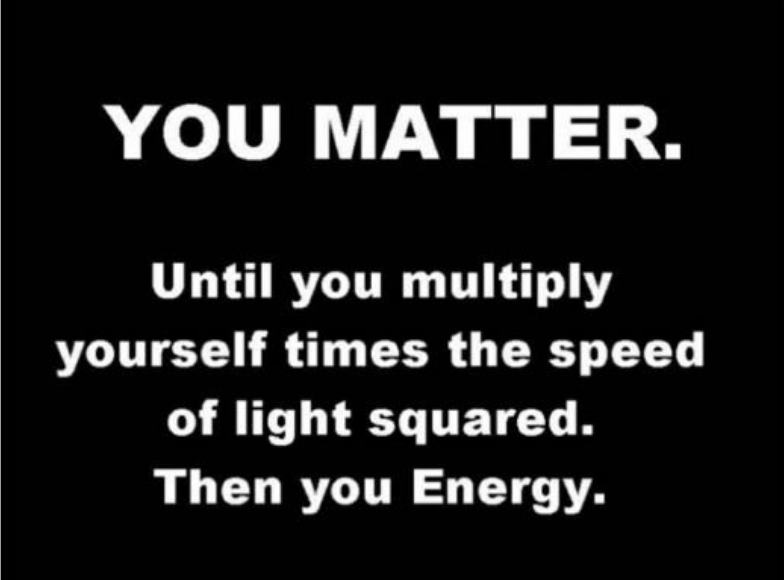
As we’re building our fantastical science fiction worlds and filling them with the devices we most wish we could possess as well.
Seriously, I want that thing to print jeans that actually fit…
This said, it’s wise to avoid that mushy middle ground. The mushy middle is that soggy place in the center of the back yard where the mud puddles form after a good thunderstorm. That dip that bogs down the lawn mower every time because it’s a place that never seems to dry out.
When we run our thingamabobs through this area, they get stuck. They sputter, churn, and kick up mud until they finally run out of gas (or burn up the engine). Pretty soon our back yard is full of interesting lawn ornaments.
Then we get the call from our Home Owners’ Association…
‘Kondoing’ our Science Fiction Gizmos

It’s essential that we learn how to streamline our story-house with Marie Kondo ruthlessness.
For those who aren’t yet familiar with Marie Kondo, she’s a world-renowned organization and efficiency expert. What works for finally decluttering our office can also work magic for our science fiction.
Trust me.
Using the Kondo method, we should look at every piece of tech we introduce into our science fiction, then ask, ‘Does it spark joy?’ then ask, ‘Are these gizmos visible, accessible and easy to use and put away?’
Does it spark joy? Does the gizmo/tech make our plot sing and create something unique and beautiful in our story?
Is it visible, accessible and easy to use and put away? Does it fit seamlessly into our story world, creating a fleshed out setting without calling unnecessary attention to itself?
If we can answer yes to both these questions, then polish that puppy up and keep it in the story. If not? Follow Kondo’s advice.
Thank it for its service and get rid of it.
Once our glittering tech is polished up and sitting in the right places in our stories–squarely in the foreground feeding the plot problems or in the background creating the seamless backdrop upon which our story happens, then the all important FICTION bit of our science fiction can come to life.
***
THANK YOU, Maria Grace! I hope y’all will give her some love in the comments. Any questions, thoughts or opinions are ALWAYS welcome because we really do love hearing from you.
As for me? I am a hopeless nerd and can’t get enough science fiction, and I found it fascinating to learn what goes on ‘behind the curtain.’
I’d never thought of science and tech being foreground or background.
Anyway, this post is mere taste of the brilliance MG brings to the table. If you love science fiction, you want learn how to write it or even how to take your existing science fiction to entirely new levels…then seriously grab your slot in Friday’s class, More Than Crop Circles: Intro to Science Fiction.
In fact, use the discount code tinfoil10 for $10 off. Seriously, $35 for TWO HOURS of awesomeness and a FREE RECORDING to study and enjoy afterwards?
Also, for anyone interested in learning how to write another hot, hot, hot genre (okay, genre family) that actually never stops being popular (Um, hello? James Patterson?) make sure to join me tomorrow for The Edge: How to Write Mystery, Suspense & Thriller. Use the promo code thrillme10 for $10 off.
Remember that The Summer ON DEMAND CLEARANCE ends TONIGHT at MIDNIGHT EST, so there are only a few more hours to grab up these deeply discounted classes (scroll down or go to the On Demand Page).
***F.Y.I. Cait Reynolds is still alive and part of the team. She’s in the middle of a cross-country move from Boston to Los Angeles…and the thought of that is enough to give me a panic attack.
About Maria Grace:

Maria Grace is the author of 23 books. She has a PhD in Educational Psychology and is a 16-year veteran of the university classroom where she taught courses in human growth and development, learning, test development and counseling. None of which have anything to do with her undergraduate studies in economics/sociology/managerial studies/behavior sciences.
She has one husband, earned two graduate degrees and two black belts, raised three sons, danced English Country dance for four years, is aunt to five nieces, is designing a sixth Regency-era costume, blogged seven years on Random Bits of Fascination, has outlines for eight novels waiting to be written, attended nine English country dance balls, and shared her life with ten cats.
Available until July 17th, 2019
CLEARANCE Branding, Social Media & Sales Classes
ON DEMAND T.K.O. BUNDLE: Branding, Blogging & Sales for Authors
$99 (Regularly $165)
ON DEMAND Brand Boss: Branding for Authors
$35 (Regularly $55)
ON DEMAND Sales for Writers: Sell Books Not Your SOUL
$35 (Regularly $55)
ON DEMAND Blogging for Authors
$35 (Regularly $55)
Also Offering:
ON DEMAND Social Schizophrenia: Building a Brand WITHOUT Losing Your Mind
$35 (Regularly $55)
CLEARANCE Craft Classes
Plot Boss: Writing Books Readers Want to BUY!
$35 (Regularly $55)
Fiction Addiction: The ‘Secret’ Ingredient Readers Crave
$35 (Regularly $55)
Story Master: From Dream to DONE
$35 (Regularly $55)
The Art of Character: Creating Dimensional ‘People’ in Fiction
$35 (Regularly $55)
Beyond Bulletproof Barbie: Creating Strong Female Characters for a Modern World
$35 (Regularly $55)








7 comments
3 pings
Skip to comment form
I loved the article. It’s a problem so many authors forget – it’s the story which matters.
I’ll admit my dark secret – I used to read what they called “men’s fiction”. You know, things like The Executioner, The Destroyer – books full of guns and testosterone. It used to make me nuts that they would spend pages of loving detail describing the bullets and barrel characteristics of weapons but the characters were cardboard cutouts and you could predict that the next book would be one of three storylines because it was so generic.
I’m in the middle of writing my second science fiction novel and I know I need to focus on the people and the problems. Whenever I find myself going down the ‘oooh shiny’ path I have to stop and ask myself “Is this cool thing I’m describing really necessary? Does it advance the plot or the immersion in the world?”
The log line example was perfect to get across the point that it’s the story, not the gizmos. (Even if we loooove our gizmos).
Well written Maria Grace. Kristen, great blog as always.
Read some scifi that is called tech/mechanics genre or something like that and 80% about operation of the machinery and rockets and weapons intricately described . Another type I’ll call battle scene genre which is mostly warrior descriptions, combat and battles. I stay away from these because they are 80% machines or fighting with little text as a novel. I suppose there is a market for each and some authors very successful but as your title suggests the story line and character interaction is what I want to read. The gizmos don’t hold my attention and once I realize what I’m reading I toss the book after a few dozen pages.
My favorite science fiction always involves the really tough ethical and moral concepts. iRobot STILL makes me cry every time. Gattica and Blade Runner are simply chilling.
Great article. I’m working on my first novel, sci-fi, and struggling adding how much tech-y gizmos, and this really helped me put it into perspective.
I used to read a book a day, more or less, and mostly science fiction. I had about 500 paperbacks piled up on top pf my wardrobe when I was 14 or 15.
SF is about the expression of story like all fiction but the tech itself can be a necessary part of characterization and so more than background yet less than the main story problem. Tech is tone,tech influences how character think and act, what they can or cannot do.Tech also puts characters into positions that would not otherwise happen. It’s a licence to ask weird what if questions and illiterate out of the box points. For my story, the Jesus Probe, I asked what would happen if alien union planet molders implanted a probe into Jesus to prevent a religion but the AI went off script and started one? This story is management Vs labor, who is at fault and why, but there is more to it than that. For me, SF is about ideas and one is blending mundane human condition stuff into the fantastic with unexpected outcomes and all to give the reader something to think about while enjoying a story we related to. After Kurt Vonnegut is where I go. Was Vonnegut’s work SF: He said no. He was more and less than SF. He wasn’t either tech is the problem or tech is the background. Vonnegut proves there is a middle where story rises above the either-or of what tech represents while still integral.
“Does it spark joy?”
Not just for writing, that’s something I apply in everyday life. Can be people, gadgets, cups, etc. I always prefer to use something that gives me a little kick.
[…] if you plan on writing sci-fi, check this article. I did read that book of putting science into fiction, and it’s good! Also, the article is […]
[…] a particular genre? Gordon Long asserts genre writing is like playing jazz, Grace Scheufler avers science fiction is more than just gizmos, and Assaph Mehr considers world-building historical fantasy (or, of unicorns and […]
[…] Now Novel has 5 lessons from great writers on how to start a short story, Maria Grace explains that science fiction is more than gizmos, and Michael Gallant shares 10 tips for creating your first children’s picture […]